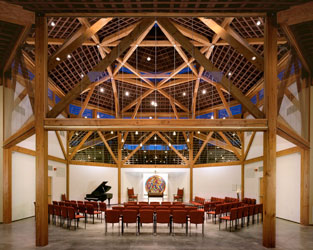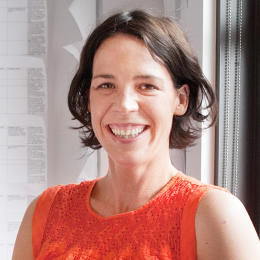CT Ranks 14th in Percentage of Women in State Legislature, As Numbers Stagnate Here and Nationwide
/For two decades, it has been one step forward, one step back in efforts to expand the number of women serving in state legislatures around the county. That is true as well in Connecticut, where in recent years the number of women in the Connecticut General Assembly has receded slightly.
Connecticut’s legislators include 53 women – 44 House members and 9 Senate members, who make up 29 percent of the General Assembly’s membership. That is a decline from 59 women, or 31 percent, as recently as 2009. Women currently comprise 25 percent of the State Senate and 30 percent of the House of Representatives, according to the Permanent Commission on the Status of Women. That number places Connecticut 14th among the states in 2015 for the percentage of women members in the legislature, tied with Alaska. 
The latest issue of Governing magazine indicates that “women have held less than 25 percent of all state legislative seats for years. But both parties are trying to recruit more female candidates.” Women make up about a third of Democratic legislators nationwide, but less than a fifth of Republicans. Of the 1,793 women currently serving as legislators right now, 60 percent are Democratic.
A 2013 report from American University indicates that women are less likely to seek political office than men, even if they have similar resumes. Women who are elected, however, are far more likely than men to have participated in a training program, according to Debbie Walsh, director of the Center for American Women in Politics at Rutgers University.
"Women do need to be recruited more than men," she told Governing. "In our surveys, men were much more likely to say it was largely their own idea, that nobody had to ask them."
According to the National Conference of State Legislatures (NCSL), 24.4 percent of state legislators in the United States this year are women. That is almost identical to 24.2 percent in 2014 – and the 24.2 percent back in 2009. That year, NCSL pointed out that the ratio of women “has increased by less than 4 percentage points over the past fifteen years.”
The leading states are Colorado, where 42 percent of the legislators are women, followed by Vermont, at 40.6 percent, Arizona at 35.6 percent, and three states tied at one-third of the legislature (33.3 percent) – Washington, Minnesota and Nevada. At the bottom of the rankings are Louisiana, 11.8%, Wyoming, 13.3%, South Carolina, 13.5%, and Alabama, 14.3%.
States with the most women elected to the state legislature:
- Colorado 42%
- Vermont 40.6%
- Arizona 35.6%
- Washington 33.3%
- Minnesota 33.3%
- Nevada 33.3%
- Montana 31.3%
- Oregon 31.1%
- Illinois 31.1%
- New Jersey 30%
- New Hampshire 29%
- Maine 29%
- Hawaii 28.9%
- Connecticut 28.3%



 Eveleigh was nominated for the state Supreme Court by Gov. Rell in 2010, after having initially been appointed to the Superior Court in October 1998 by Gov. Rowland.
Eveleigh was nominated for the state Supreme Court by Gov. Rell in 2010, after having initially been appointed to the Superior Court in October 1998 by Gov. Rowland.









 uth Dakota, Wisconsin, and Minnesota, where it ranks 2nd. Anderson also ranks high in Massachusetts and Rhode Island, at #6.
uth Dakota, Wisconsin, and Minnesota, where it ranks 2nd. Anderson also ranks high in Massachusetts and Rhode Island, at #6. The #10 surname in the U.S. is Wilson, which is described as having “a checkerboard-like popularity across the United States.” In Connecticut, Wilson ranks as the 13th most popular last name.
The #10 surname in the U.S. is Wilson, which is described as having “a checkerboard-like popularity across the United States.” In Connecticut, Wilson ranks as the 13th most popular last name.



 At the Law and Government Academy of Hartford Public High School, one class used Serial as the basis for a semester’s curriculum. Over the course of five months, students examined the issues in each episode of the 12-episode podcast and were asked to choose a side – such as defense counsel, prosecutor, or witness – and then advocate for their position. For their final exam, students wrote appellate court briefs and argued their cases.
At the Law and Government Academy of Hartford Public High School, one class used Serial as the basis for a semester’s curriculum. Over the course of five months, students examined the issues in each episode of the 12-episode podcast and were asked to choose a side – such as defense counsel, prosecutor, or witness – and then advocate for their position. For their final exam, students wrote appellate court briefs and argued their cases. “It’s use of new media and compelling storytelling has opened up many new opportunities for students, educators, and the intellectually curious to reexamine aspects of our legal system,” said CT Forum Executive Director Doris Sugarman. “We’re thrilled to see what is sparked when our community connects to the expression of big ideas that The Forum brings to Connecticut audiences.”
“It’s use of new media and compelling storytelling has opened up many new opportunities for students, educators, and the intellectually curious to reexamine aspects of our legal system,” said CT Forum Executive Director Doris Sugarman. “We’re thrilled to see what is sparked when our community connects to the expression of big ideas that The Forum brings to Connecticut audiences.”
 Idaho recorded the largest percentage increase over the four-month period (+2.2 percent), followed by Utah (+1.8 percent). The other leading job growth states, by percentage, were Washington, Oregon, Michigan, South Carolina, Florida, Nevada, California, North Carolina, Arizona and Vermont. In West Virginia, Louisiana and Maine, average monthly employment declined slightly.
Idaho recorded the largest percentage increase over the four-month period (+2.2 percent), followed by Utah (+1.8 percent). The other leading job growth states, by percentage, were Washington, Oregon, Michigan, South Carolina, Florida, Nevada, California, North Carolina, Arizona and Vermont. In West Virginia, Louisiana and Maine, average monthly employment declined slightly. Much of how state economies are performing is due to the individual sectors making up their employment base, Governing reported, as several industries experienced weak growth to start the year. Nationally, construction and manufacturing employment expanded little over the first four months, and government employment (local, state and federal), similarly remained essentially unchanged since January, the analysis pointed out.
Much of how state economies are performing is due to the individual sectors making up their employment base, Governing reported, as several industries experienced weak growth to start the year. Nationally, construction and manufacturing employment expanded little over the first four months, and government employment (local, state and federal), similarly remained essentially unchanged since January, the analysis pointed out.



























